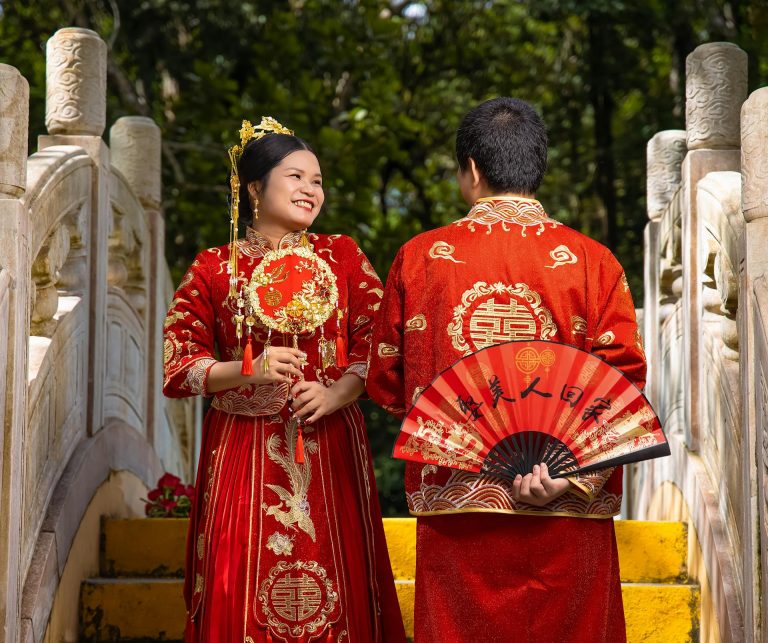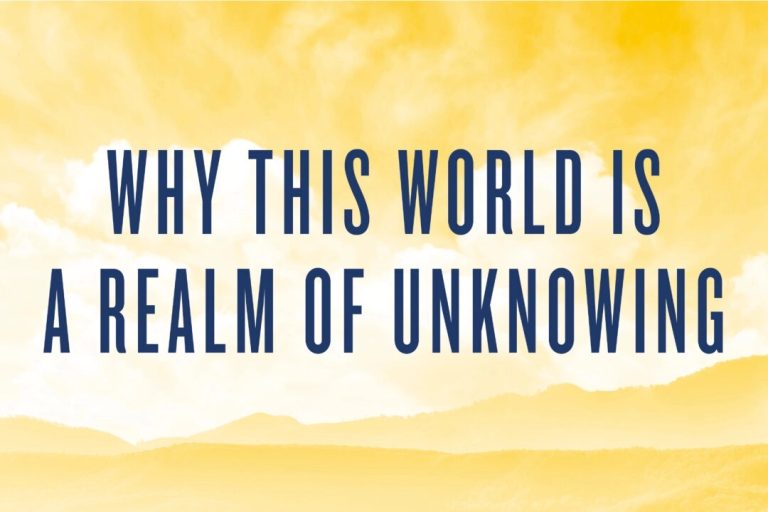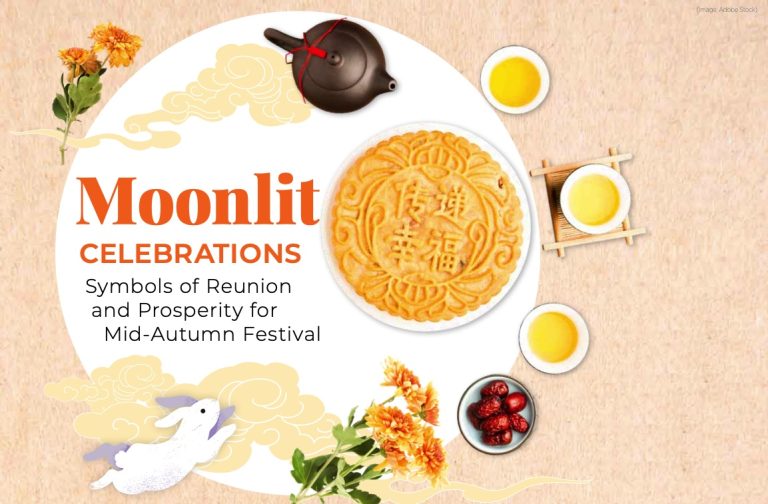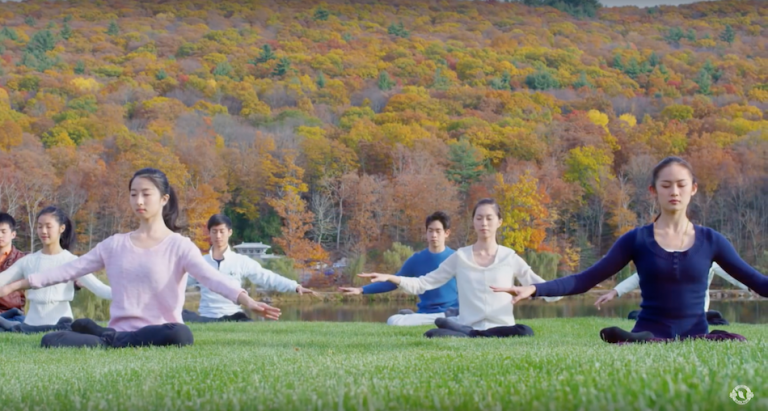In ancient China, weddings were not just a celebration of love; they were considered a strategic arrangement between families. Marriages were often pre-arranged, sometimes from birth, to ensure the continuation of family lines, maintain social standing, and enhance prosperity. Over time, the focus of marriages shifted, but Chinese weddings continued to symbolize unity, prosperity, and respect for family traditions.
What makes a Chinese wedding special?
A Chinese wedding has many unique elements, and every aspect is filled with deeper meaning. From the choice of colors to the gifts exchanged, everything is done to ensure that the couple will enjoy a harmonious and prosperous life together.
One of the most significant values highlighted in Chinese weddings is filial piety, where respect for parents and elders is integral to the celebration and demonstrated in various rituals throughout the process.
Pre-wedding rituals
1. Betrothal 過大禮 (Guo Da Li)
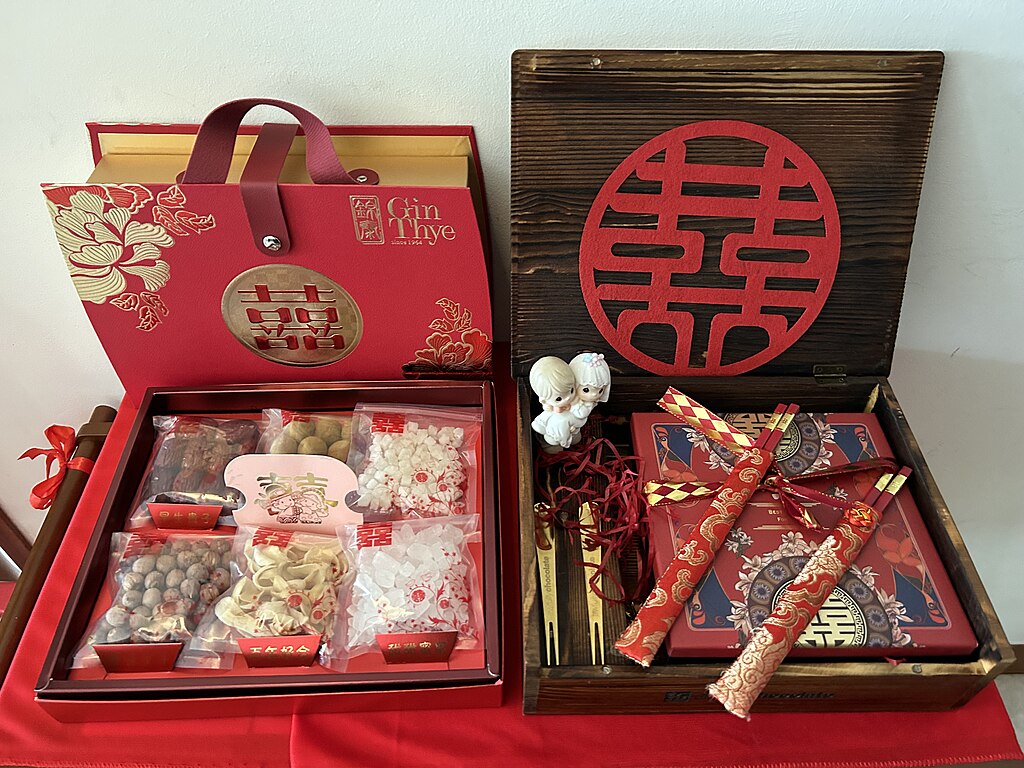
The traditional betrothal ceremony is one of the first steps leading up to a Chinese wedding. It involves the exchange of gifts between the groom’s family and the bride’s family to formally establish the engagement. The groom’s family prepares a variety of symbolic gifts, which include items such as tea, wine, and fruits. The bride’s family reciprocates with gifts for the groom. This exchange signifies the groom’s commitment to marrying the bride and is also an opportunity for the families to meet and build relationships.
2. Choosing an auspicious date
In Chinese tradition, selecting a favorable wedding date is essential for ensuring future happiness and harmony. Couples typically consult a fortune-teller or an elder skilled in interpreting the Chinese lunar calendar to find the perfect date. This date is often chosen based on the couple’s zodiac signs, family background, and other astrological factors. The goal is to avoid inauspicious days and find one that promises good fortune for the marriage.
3. Hair Combing Ceremony 梳头 (Shang Tou)
Success
You are now signed up for our newsletter
Success
Check your email to complete sign up
On the eve of the wedding, both the bride and groom go through the hair combing ceremony. Performed by their respective parents or a close elder relative, this ritual symbolizes the transition from childhood to adulthood and represents blessings for a harmonious marriage. The elder combs the bride’s and groom’s hair four times, each stroke conveying good wishes such as “May your marriage last a lifetime” or “May you be blessed with children.”
Distinctly Chinese elements
Red is the dominant color
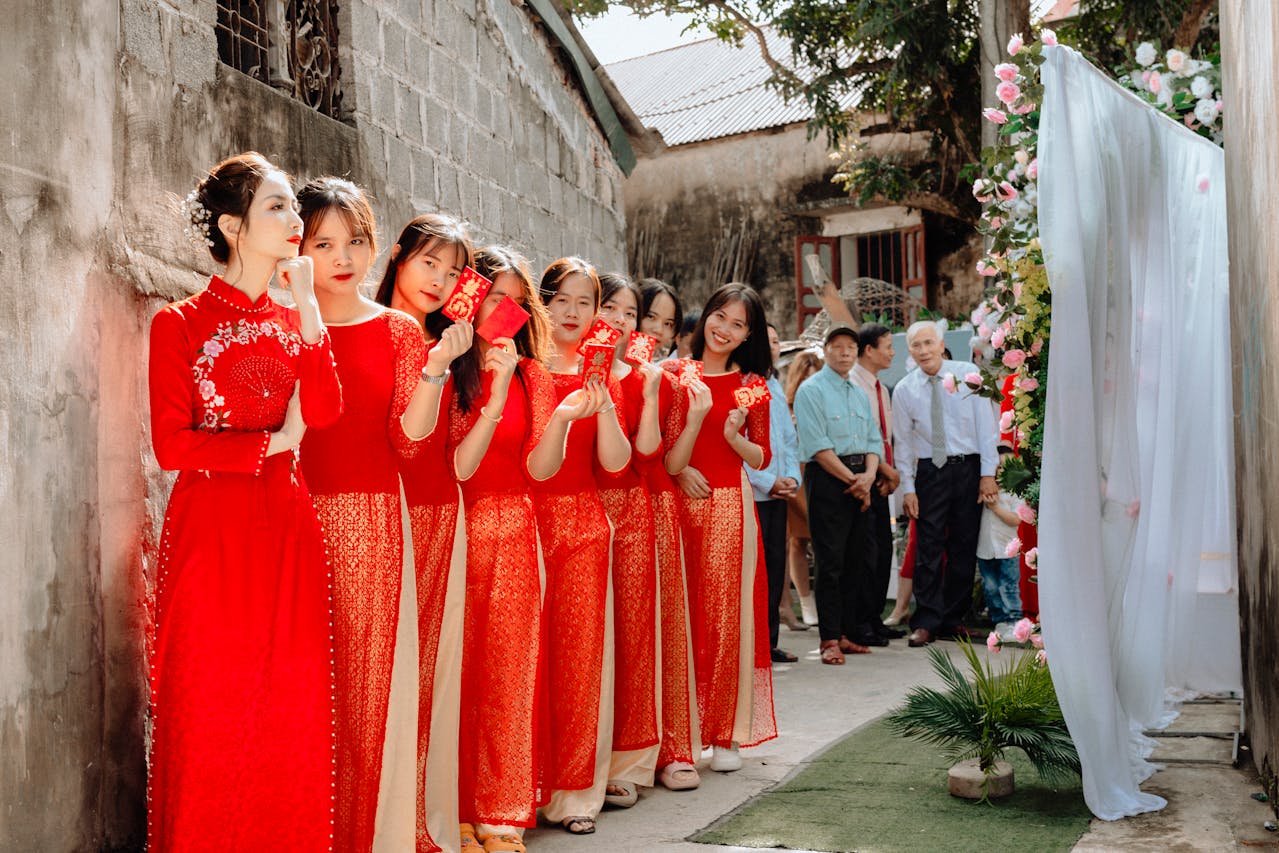
In contrast to Western weddings where white is traditionally worn by the bride, red is the primary color for Chinese weddings. Red symbolizes good fortune, joy, and happiness in Chinese culture. The bride typically wears a red qipao (a traditional Chinese dress) during the ceremony or reception. Red also dominates the decorations, from the invitation cards to the lanterns and table settings. Even the red envelopes given to the couple are a sign of auspiciousness and wealth. White, in contrast, is associated with mourning in Chinese culture, so it is generally avoided.
Double happiness symbol 囍 (xi)
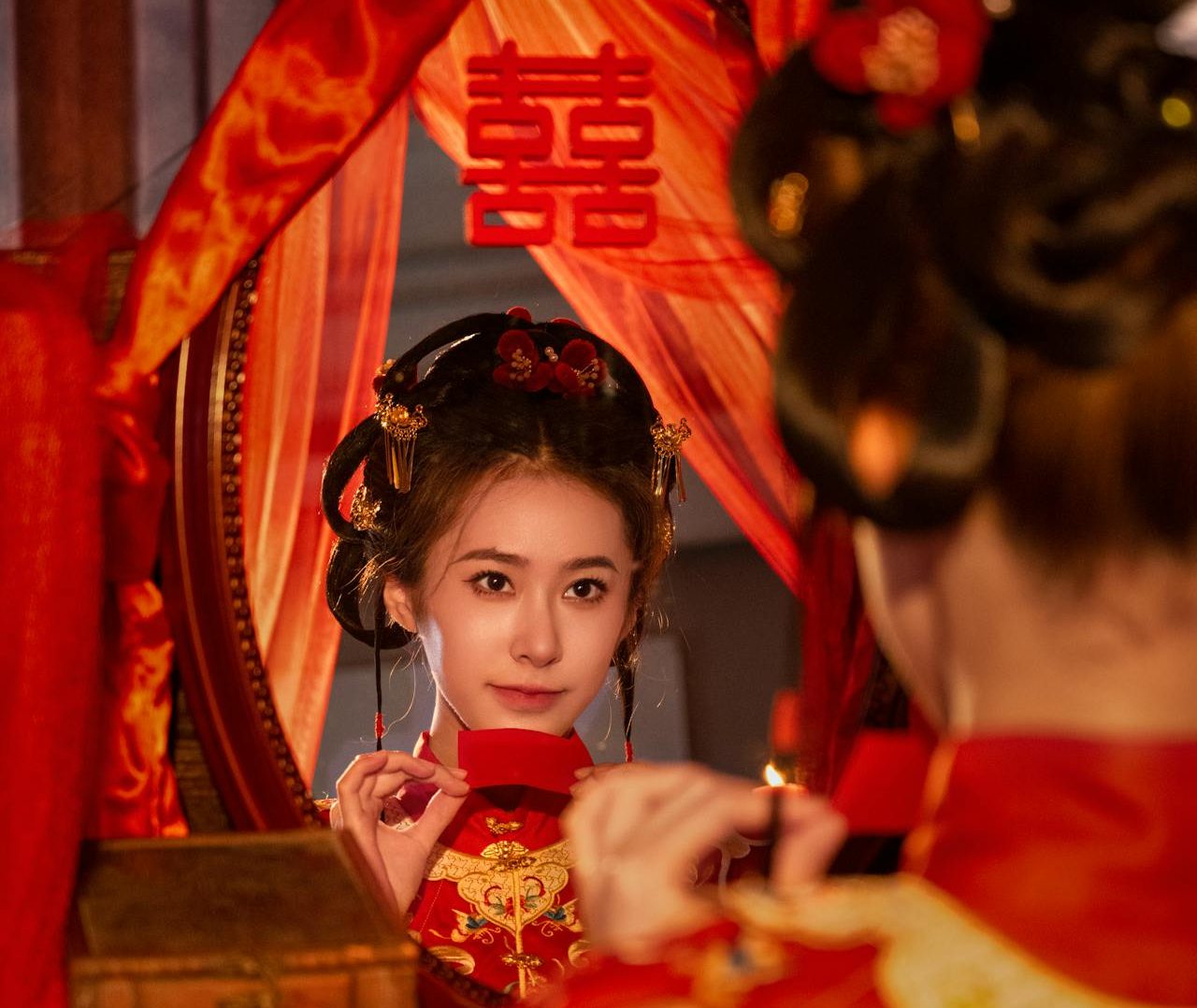
Another unique aspect of Chinese weddings is the use of the “double happiness” symbol, which is prominently displayed during the wedding festivities. This traditional Chinese character represents joy and harmony in marriage, and it is often seen in invitations, decorations, and gifts. It embodies the couple’s hope for a successful and happy marriage, symbolizing a lifelong partnership full of happiness.
Wedding attire and traditions
The traditional attire worn during Chinese weddings reflects the importance of the event and the status of those getting married. Traditionally, the bride’s attire is a red Qipao or Cheongsam, a form-fitting dress adorned with intricate gold embroidery of dragons and phoenixes. The dragon symbolizes the male, and the phoenix represents the female—together, they symbolize balance and marital harmony. Some brides opt for the kua, a two-piece outfit made from heavily embroidered silk, typically with the same dragon and phoenix motifs.
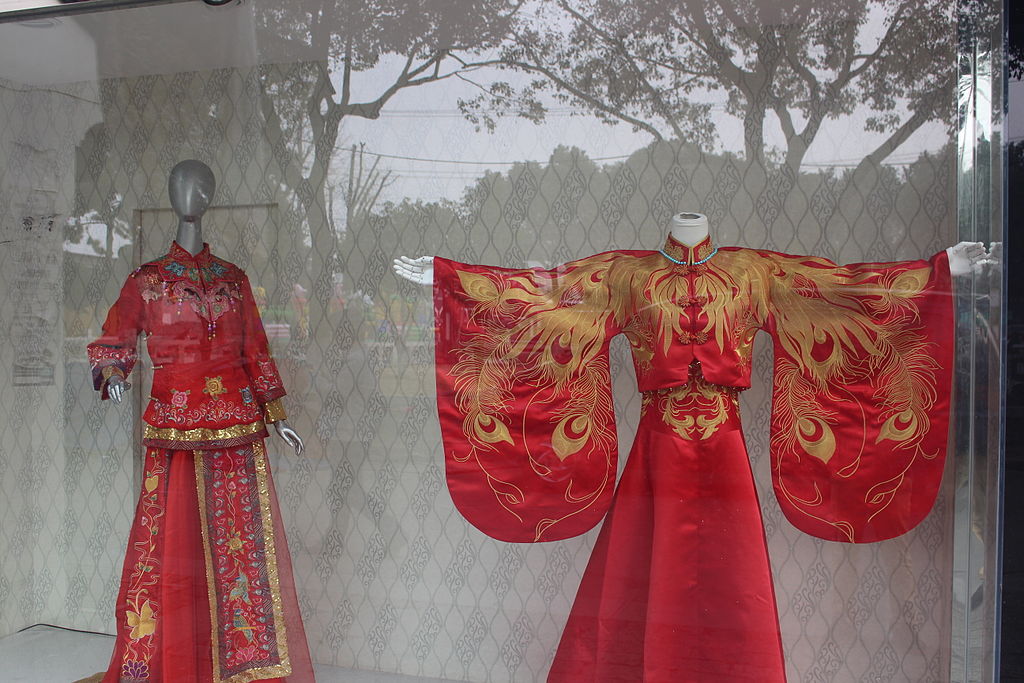
The groom’s attire can range from a traditional robe (Changshan) in red or black, to a modern suit depending on the couple’s preference. The groom’s role is to complement the bride, and his outfit is often matched to hers in terms of color and embellishment.
Wedding day ceremonies
The wedding day itself is filled with multiple rituals and ceremonies, each contributing to the overall meaning and significance of the union.
Breaking the gates to fetch the bride (Jie Qin):
One of the most anticipated parts of a traditional Chinese wedding is when the groom and groomsmen go to the bride’s house to “fetch” her. However, before the groom can enter, the bridesmaids and family members block the door and demand the groom pass a series of “tests” to prove his love for the bride. These games often include answering riddles, completing challenges, or negotiating a red envelope (money offering). Once successful, the groom can finally enter and meet his bride.
The Tea Ceremony
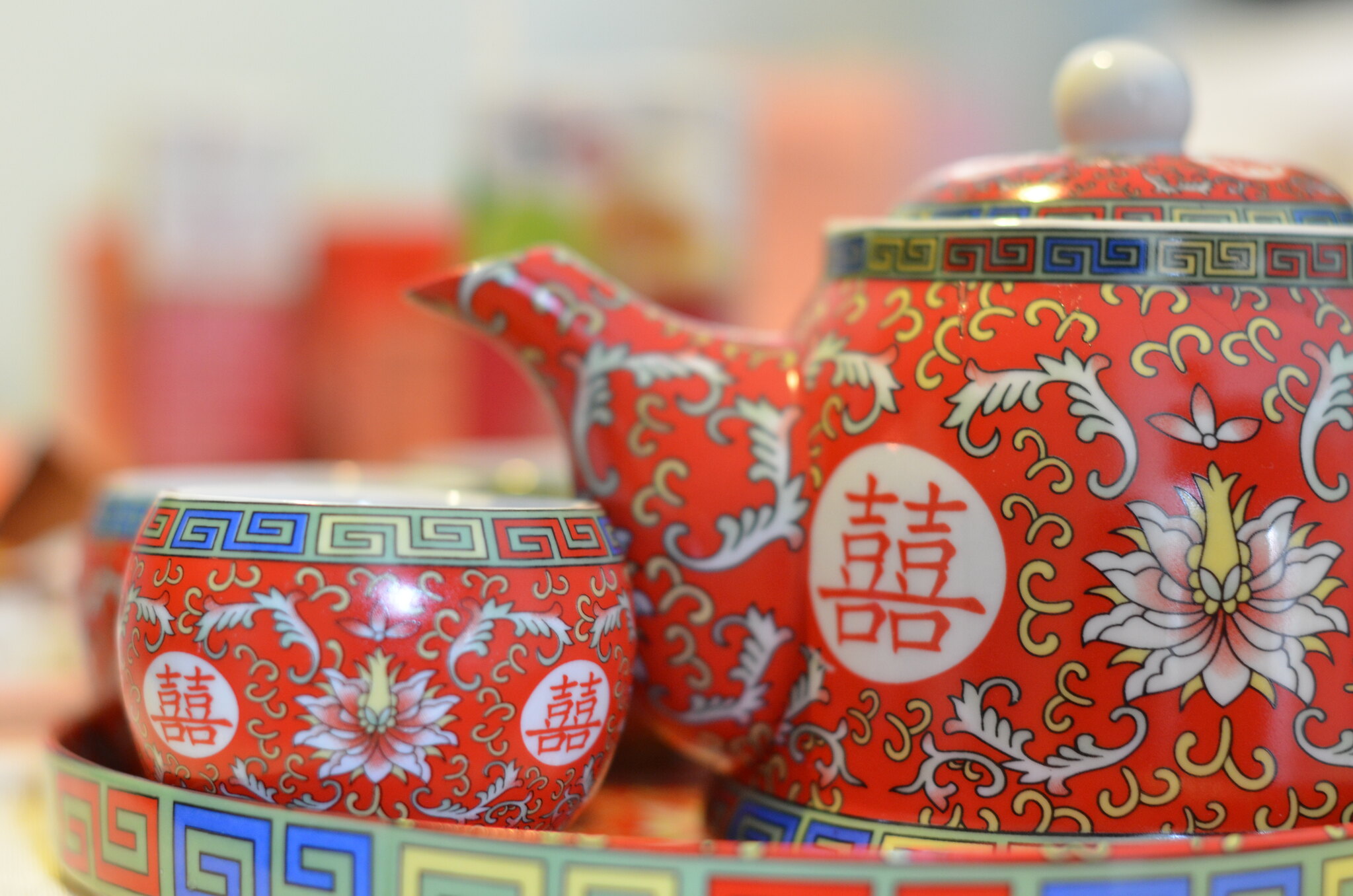
The tea ceremony is one of the most important elements of a traditional Chinese wedding. It is a formal occasion where the bride and groom serve tea to their parents and elders as a sign of respect and gratitude. In return, the couple receives blessings and gifts from their family members, often in the form of red envelopes containing money. The tea ceremony is not just a formality; it is considered a pivotal moment where the newlyweds honor their families and show their respect for the wisdom of their elders.
Red envelopes (hongbao)
Gift-giving at a Chinese wedding is also distinctive. Instead of receiving household items or appliances like in Western weddings, the couple is gifted red envelopes filled with money. These red envelopes, or hongbao, are believed to bring good fortune to the couple, and the money inside is considered a symbol of luck and prosperity. The amount of money given usually ends in an even number, as odd numbers are associated with funerals. The larger the amount, the greater the blessing for the couple’s future.
Banquet tradition
The wedding banquet is a grand affair, typically featuring multiple courses, often between eight and twelve dishes, each representing something auspicious. Common dishes include fish (symbolizing abundance), lobster (symbolizing joy and harmony), and noodles (symbolizing longevity) with egg (symbolizing fertility). Sharing a meal of these dishes is a way of conveying good wishes for the couple’s future life together.
Lion Dance and firecrackers
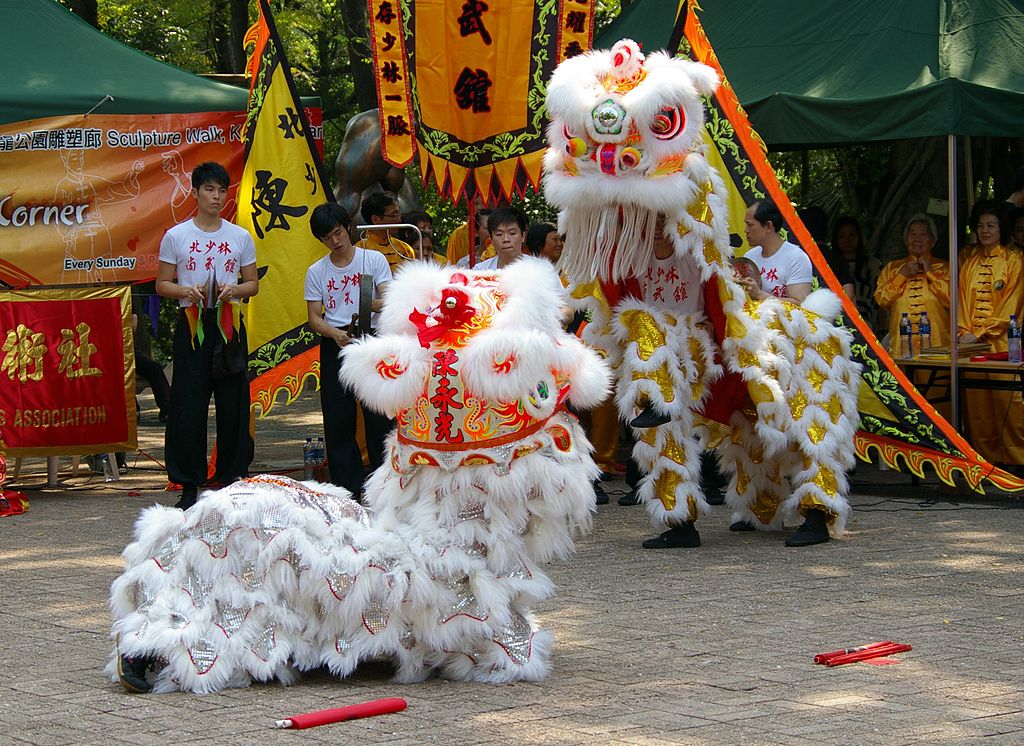
To ensure a future of good fortune, the Lion Dance (symbolizing power, strength, and protection) and firecrackers (which ward off evil spirits with their loud noise) are often included in the wedding celebration. They create a festive atmosphere, adding to the joy of the occasion.



